TRAVELS IN SPACETIME A Story of Rome
It was a sweltering day in July, with the sun beating down on me like a burst of cosmic energy. There, from high up in a cloud, it was I, Jupiter, the king of gods, contemplating Rome, the city I had founded many centuries ago.
That moment of divine impulse, of which I still boast, gave rise to an unprecedented adventure, and today, here, from my privileged spot on this fluffy cloud, I can contemplate the changes that this city has undergone over the centuries.
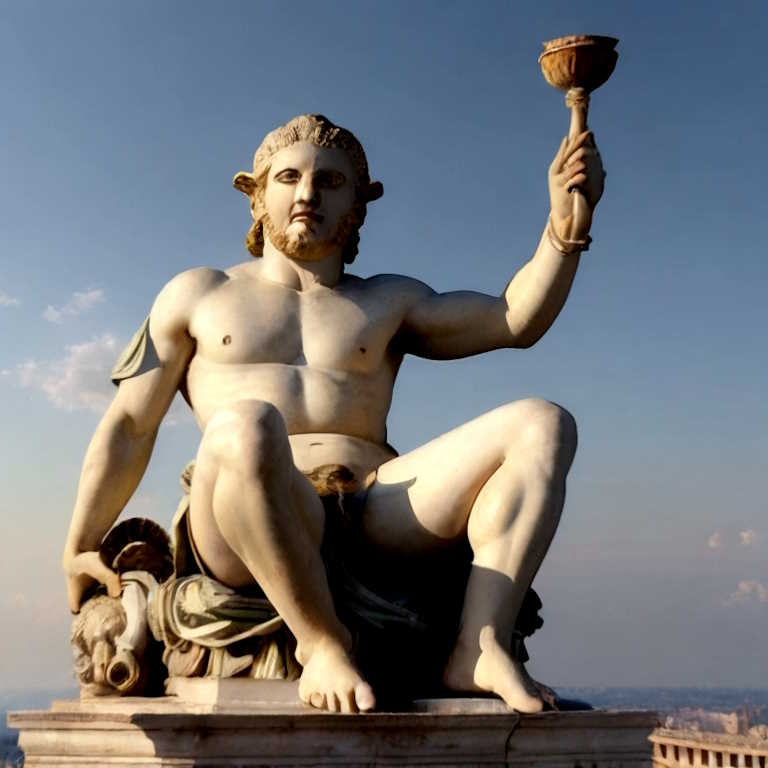
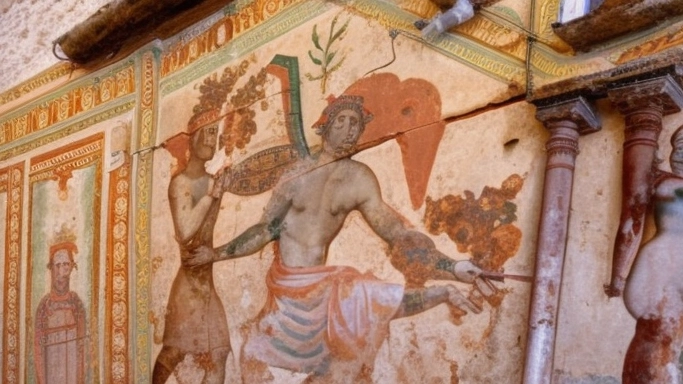
Foundation of Rome
Rome, ungrateful daughter, has given me endless joys and sorrows. I witnessed its foundation, when Romulus and Remus, in a frenzy of fraternal violence, divided this promised land between themselves.
Vesta, the goddess of sacred fire, could only watch in astonishment as Rome burned under the fury of my lightning bolts. Woe to you, Rome, for betraying me so!
When Rome was founded in the 8th century BC, all I could see was a modest settlement on the banks of the Tiber River. This first nucleus, known as Rome Quadrata, was delimited by walls made of tuff, and the view was dominated by simple huts and small wooden structures. However, even at that time, I could sense the energy and ambition of this young city.
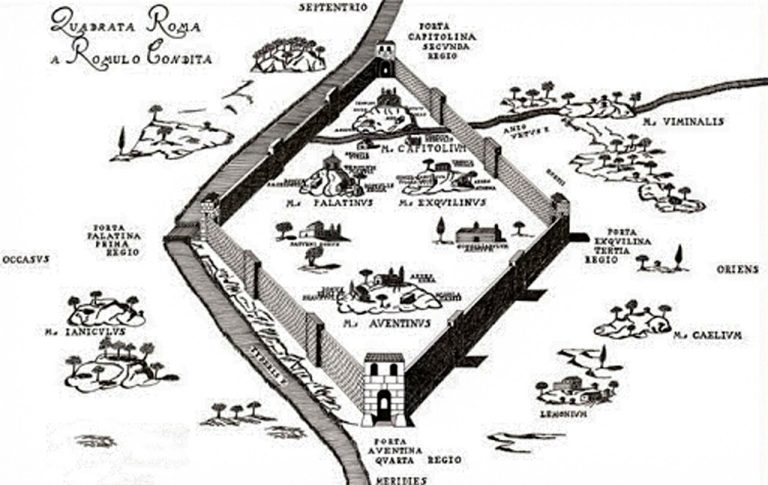
Roman Monarchy
A historical period, from 753 BC to 509 BC, that saw the rule of seven kings before the advent of the Republic.
These seven kings – personally, I counted eight – contributed to the foundation and growth of Rome as a city-state, but in the end, the monarchy was overthrown and replaced by a republican system of government.
According to tradition, Romulus is associated with the founding of the city, Numa Pompilius is remembered for introducing religious worship and establishing the Roman calendar, Tullus Hostilius was a warrior king who carried out numerous military campaigns, while Ancus Marcius was responsible for the construction of important public works such as the Sublician Bridge. Tarquinius Priscus was an enlightened ruler who promoted art and culture, while Servius Tullius introduced significant political reforms. Finally, Tarquinius Superbus was the last king of Rome before the birth of the Republic and was deposed due to his tyranny.
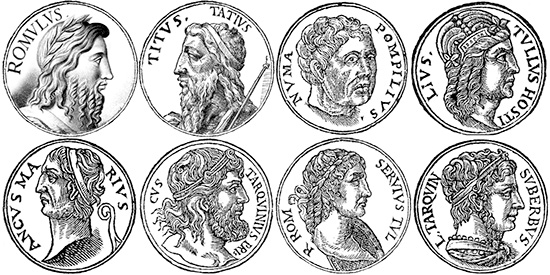
Republican Period
In 509 BC, the city freed itself from Etruscan domination and became a republic governed by two consuls. During this period, it conquered much of central and southern Italy and clashed with major powers like Carthage.
In the republican period, Rome became one of the major powers in the Mediterranean. However, the Roman political system was characterized by internal power struggles and political instability. In 44 BC, Julius Caesar, one of the most important Roman conquerors, was assassinated by the Roman Senate.
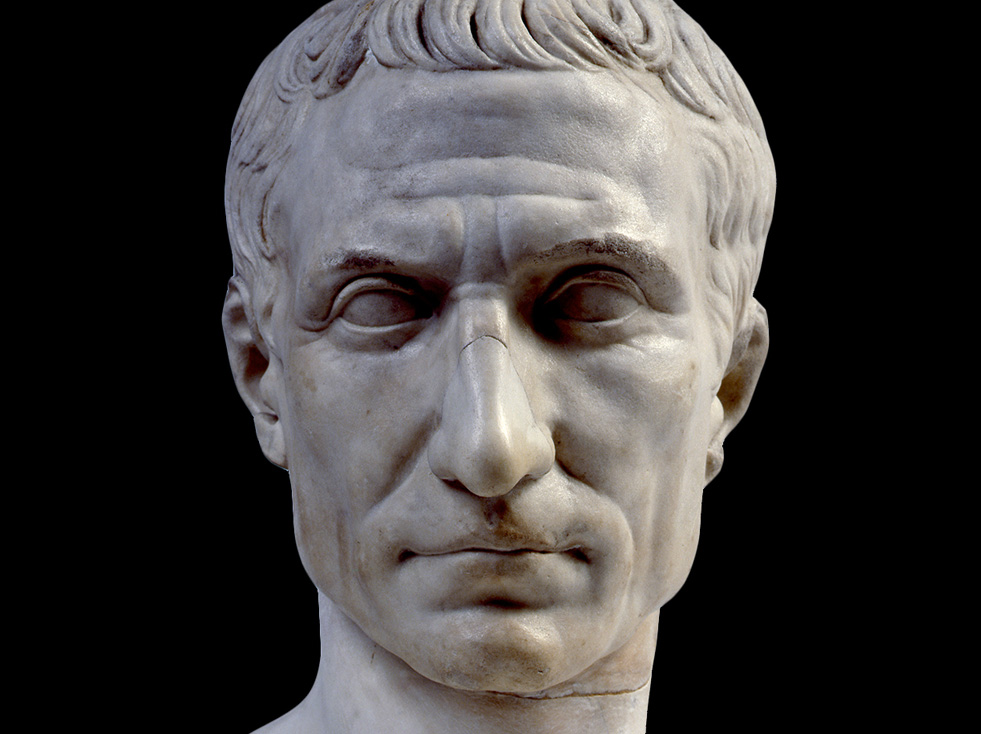
At the roots of an Empire
I was there, watching as they built roads and bridges, and when they finally managed to construct the Colosseum and the Pantheon, I felt proud.
Proud also of the Imperial Fora, a series of monumental squares that connected the Colosseum to the Capitoline Hill, where important political, commercial, and social activities took place. And of the main roads, such as the Appian Way and the Sacred Way, crowded with citizens and visitors from all over the empire. Rome was a crossroads of cultures, rich in public buildings, baths, theaters, and temples that reflected the grandeur of the Empire.
I nodded with pride as the years passed and Rome became the heart of a great empire. Its name was on everyone’s lips, from Britannia to Egypt.
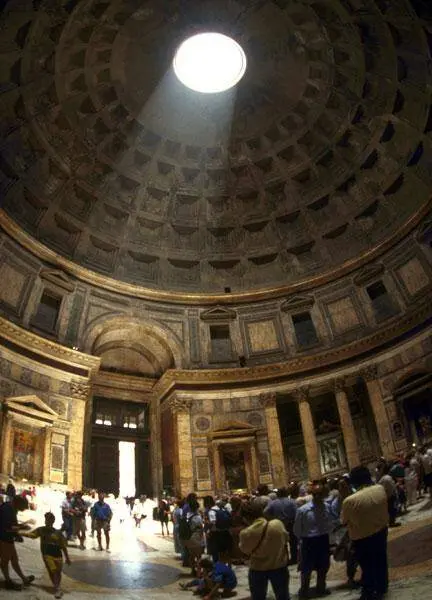
Roman Empire
The rise of the Roman Empire brought a period of great prosperity to the city. The streets widened, and aqueducts were developed, providing clean water to over a million inhabitants. I can see the ancient public buildings, such as the Baths of Caracalla and the Basilica of Maxentius, and the vibrant colors of the decorations standing out against the horizon. Imperial Rome, with the magnificence of Roman architecture, its sumptuous buildings and its extravagant splendor, made my godly heart shine.
The Roman Empire
Founded in 27 BC by Augustus, the Roman Empire reached its peak under the reign of Trajan in the 2nd century AD. During his rule, the empire expanded across much of Europe, northern Africa, and western Asia.
The Roman Empire was based on a centralized system of government, with an emperor at the helm. The Roman legions constituted a formidable military force that ensured border security and protected the empire from invasions.
Rome was distinguished by its administrative organization, the spread of Roman law, and the promotion of Greco-Roman culture. The network of Roman roads facilitated trade and communication, contributing to the economic prosperity of the empire.
However, over the centuries, the Roman Empire faced various challenges. Political corruption, power struggles, economic crises, and external pressures undermined its stability. In 476 AD, the last Western Roman Emperor, Romulus Augustus, was deposed by barbarians, marking the end of the Western Roman Empire.
The Eastern Roman Empire, known as the Byzantine Empire, survived until 1453 when Constantinople was conquered by the Ottoman Turks.
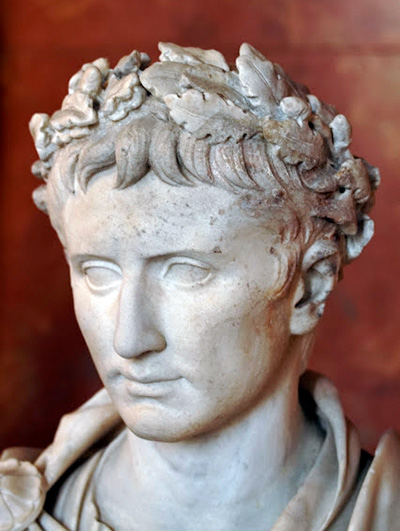
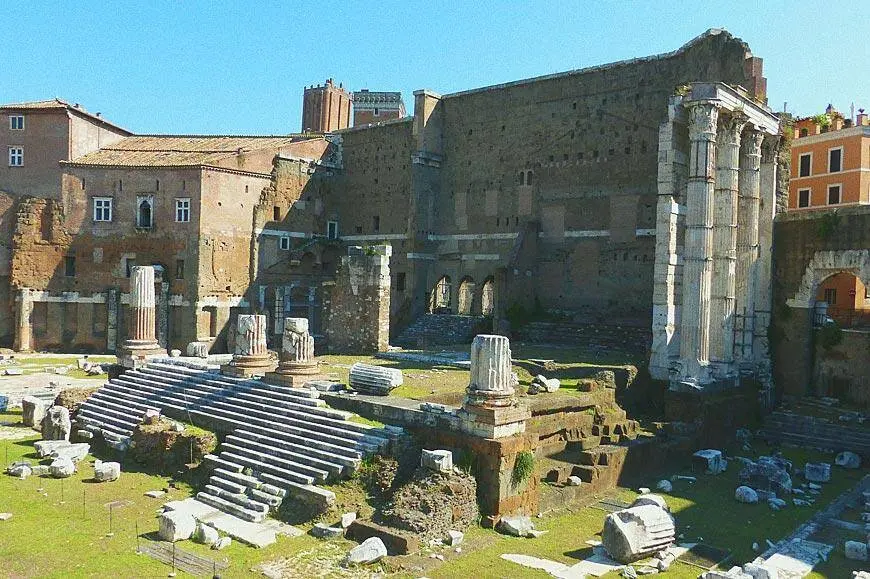
The Middle Ages in Rome
Then came the Middle Ages, that dark period when the city was plundered and humiliated.
But the Middle Ages in Rome were also a period of great historical and cultural importance for the city. It was the seat of popes and the temporal power of the Catholic Church.
During this period, I saw the construction of numerous churches and basilicas, including the Basilica of St. John Lateran and the Basilica of Santa Maria Maggiore. Moreover, many of the ancient structures of the city were restored and expanded.
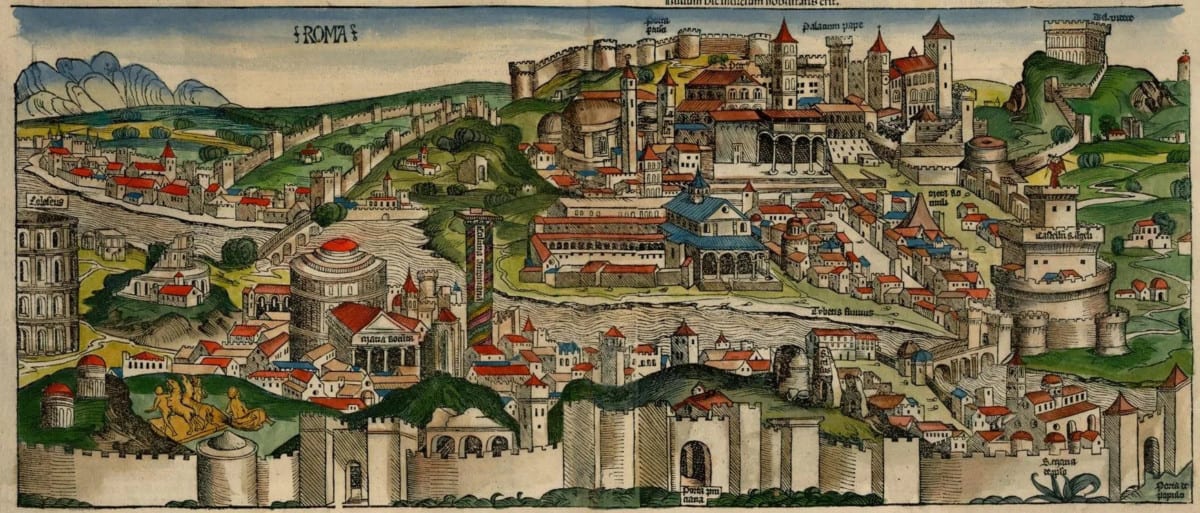
The Fabulous Domus Aurea of Nero
In the second half of the 15th century, Rome was a decaying city, with crumbling palaces and muddy streets… and a hidden treasure beneath its feet: the Domus Aurea of Nero.
This imperial villa had been buried for centuries until it was accidentally discovered in 1480.
The Domus Aurea was a masterpiece of architecture and decoration, with walls covered in frescoes and mosaics. An ancient art treasure that inspired many Renaissance artists, such as Raphael, Michelangelo, Bramante…
To reach it, the artists would lower themselves with a rope through a hole in the ceiling. That was the only way to access it.
In the Domus Aurea, Renaissance artists carefully studied the grotesques, highly popular paintings in ancient Rome depicting scenes of everyday life, animals, and plants.
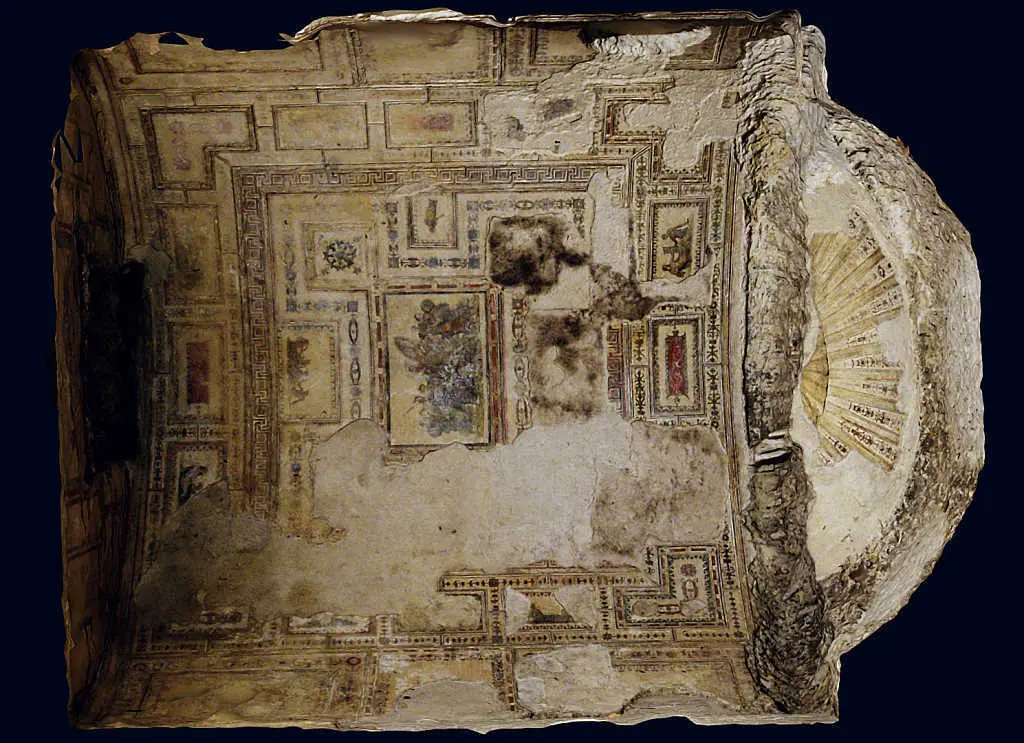
The Young Michelangelo
I was watching the young Michelangelo with curiosity as he descended with a rope through the hole in the ceiling of the Domus Aurea, so eager to study ancient art that he was willing to risk his life for it.
“Hello, Michelangelo,” I said, “what brings you to visit the Domus Aurea?”
“I am seeking inspiration for my paintings,” Michelangelo replied, “and there is no better place to find inspiration than here, in the house of Emperor Nero.”
I nodded approvingly. “Yes, that’s true. But you must be careful. This place is dangerous.”
Michelangelo didn’t seem concerned. “I know, but I can’t resist the temptation to see the grotesques. They are so fascinating.”
I smiled. “Yes, the grotesques are truly impressive. But do you know how they were made?”
Michelangelo shook his head.
“The ancient Roman artists used a technique called stucco. They applied a layer of fresh plaster on the walls and then painted on top of it. When the plaster dried, they scraped away some parts to create a three-dimensional effect.”
Michelangelo seemed fascinated. “I knew there was a secret behind these works of art. Thank you, Jupiter.”
He slowly descended from the hole in the ceiling, being careful not to get hurt.
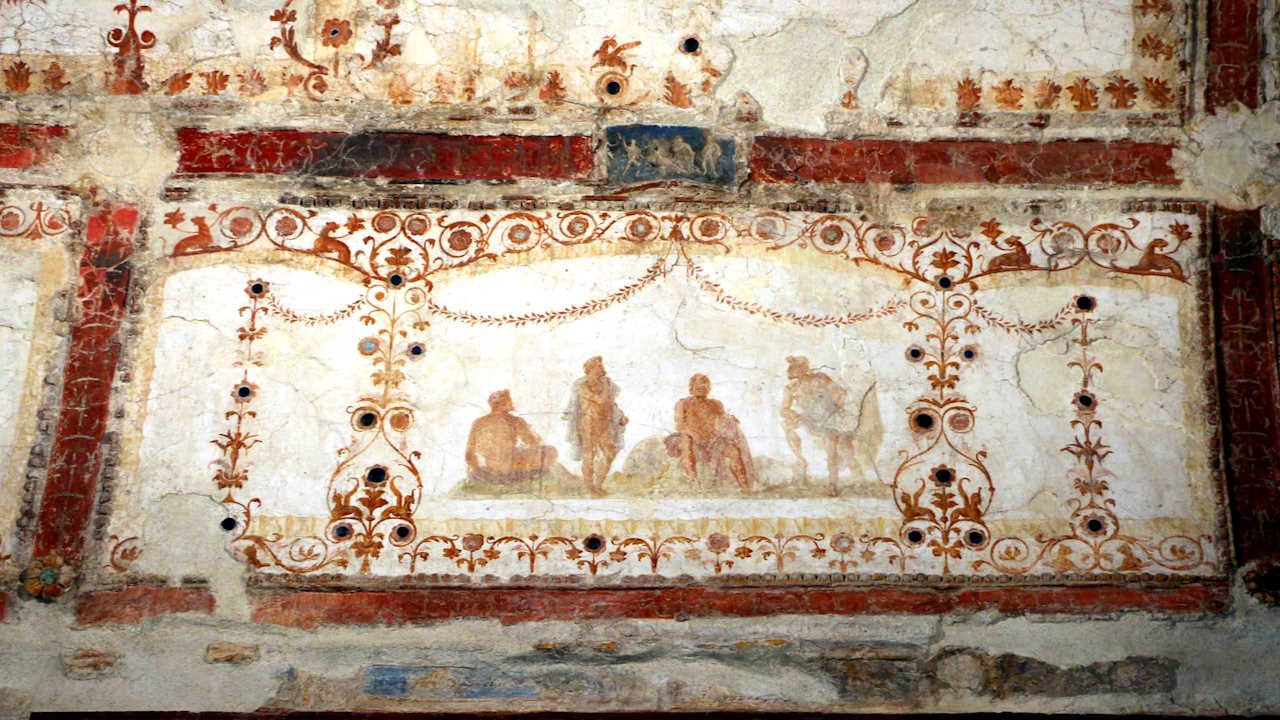
The discovery of the Domus Aurea was an important event for the revival of art in Rome, which became the center of a great artistic and cultural renaissance.
Artists like Michelangelo and Raphael worked on unparalleled works of art, and new palaces and squares were built, revealing the magnificence of this city. St. Peter’s Basilica was reconstructed, becoming one of the greatest works of religious architecture.
Baroque Rome and Borromini
I continue my journey through time, and I find myself in Baroque Rome. The architect Borromini is busy designing one of his marvelous churches. I approach and ask, “Borromini, what do you think of this Rome?” Borromini looks up from his drawing and replies, “Oh, Jupiter, this Rome is a triumph of art and beauty. I am happy to contribute to this city that I love so much. But I wonder what it would be like if I could see the future.”
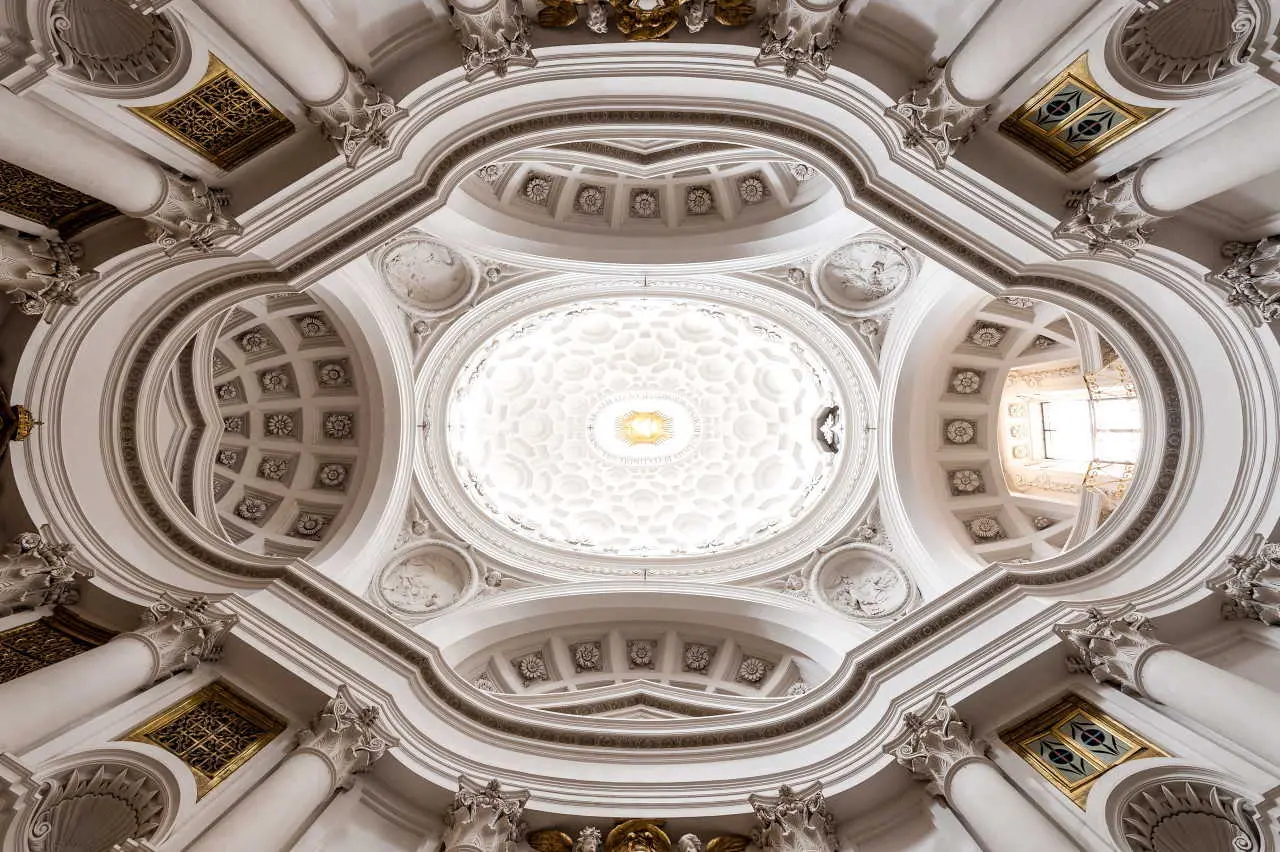
Rome as the Capital of Italy
I heard his sighs of frustration as he tried to compete with the grandeur of my ancient temples. I wanted to offer some words of consolation; his San Carlino alle Quattro Fontane deserved it. But the wave function was already collapsing, teleporting me to Rome during the 19th century when the city became the capital of Italy. It was a period of great change and opportunity for the city and the country.
During these years, Rome was a city full of life and energy. The streets were bustling with people coming and going, and there was always something to do or see: a wide variety of shops, restaurants, and cafes, offering the best food and wine in Italy.
There were also challenges, such as widespread poverty among the people. Nevertheless, a strong determination among the population propelled the city and the country forward.
One of the most significant changes I witnessed was the transition from papal Rome to modern Rome. Many religious buildings were transformed into museums or monuments, while new public buildings were constructed to accommodate the institutions of the new Italian state.
Even the streets and neighborhoods underwent major changes. New neighborhoods and roads were built to connect various parts of the city, while old buildings were demolished to make way for new constructions.
Amidst all this bustling activity, there was also great attention given to the preservation of the city’s historical heritage.
I was fortunate to witness the transformation of the city from a small religious capital to a great modern metropolis.
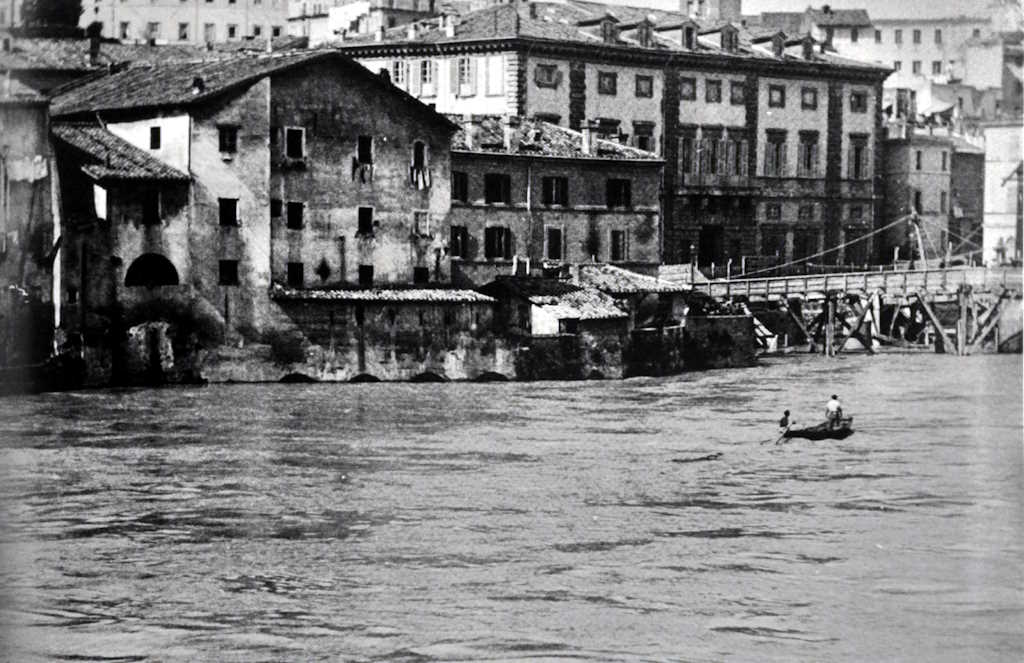
A constantly evolving metropolis
One feels quite comfortable on this cloud. I took the opportunity to take a nap. When I woke up and looked down, I noticed that it was the early 1900s.
Architecture and urban planning were in full swing, with numerous projects aimed at modernizing the city. New buildings were sprouting up everywhere, boasting modern and innovative designs.
I was somewhat skeptical of these new buildings, which seemed a bit cold and impersonal to me. I was also worried that the city was losing its unique character, replaced by modern and anonymous structures. Then I realized that the city wasn’t losing its identity; it was simply evolving. Rome had always been a city in constant evolution, and this was just one chapter in its history.
Rome today
I know the rest by heart, and I believe you do too, so I’ll skip ahead to today, the modern era!
Today, looking down from above, I see contemporary Rome.
Fashionable clothing, ripped jeans, and catchphrases that I didn’t even know. “Ciao” and “like” have replaced my dear “Salve.” I’ve seen ancient traditions fade away, replaced by fast food and shopping centers.
Vesta whispered in my ear, somewhat scandalized, that even the Romans today have a touch of American slang. “Yo, what bowls, baby!” I couldn’t help but smile. Rome has truly become a multicultural city, a fusion of styles and languages.
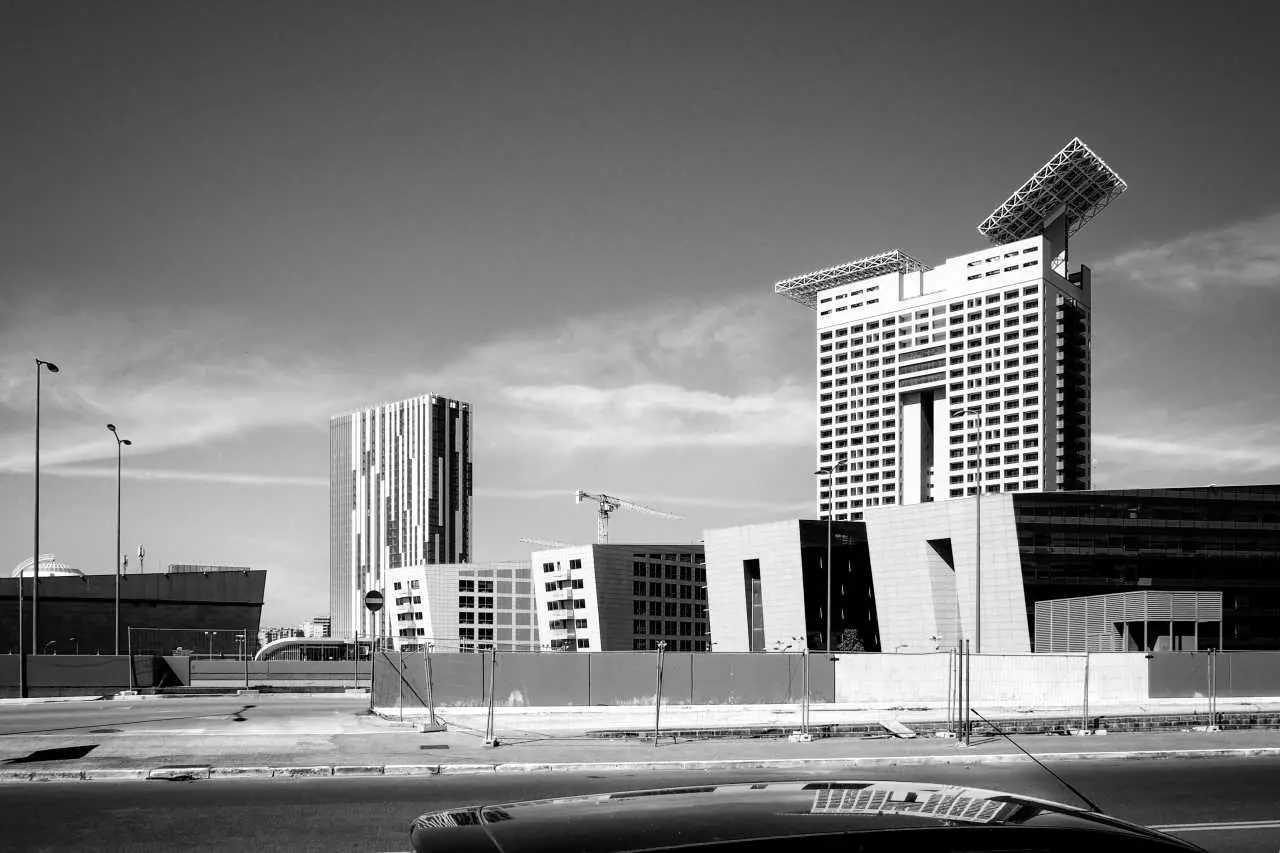
Contemporary Rome
In the end, I had to admit that Rome has survived and thrived despite everything, a city that embodies history, culture, and beauty. I cannot deny its elegance, its monuments, and its indomitable spirit. Rome is a city that adapts, reinvents itself, and resists. And I, eternal Jupiter, from this cloud, observe and admire, hoping that my people can continue to walk these streets and make my Rome shine for many centuries to come.
Goodbye, Rome!
Franco Rea 2023
Travel Magazine
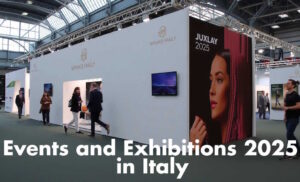
Events and Exhibitions 2025 in Italy
2025 in Italy promises to be a year full of events and exhibitions: from major cultural festivals to art exhibitions, from historical celebrations to meetings with the most innovative expressions of design and technology, the calendar is full of opportunities to explore the creativity and traditions of our country. Whether you are passionate about art, music, fashion, history or gastronomy, you will surely find something extraordinary to discover.
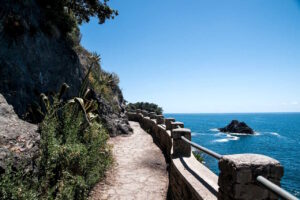
Liguria, where the sea embraces the mountains
A narrow strip of land nestled between the mountains and the sea, Liguria is a region that tells its story through contrasts. Every glimpse is a painting, every alley a tale, every flavor a narrative.
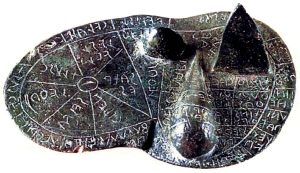
The Etruscans, an enigmatic people from central Italy
The Etruscans represent one of the most enigmatic and influential civilizations of antiquity, a people who inhabited central Italy (particularly the region corresponding to present-day Tuscany, along with parts of Lazio and Umbria, which the ancients called Etruria)
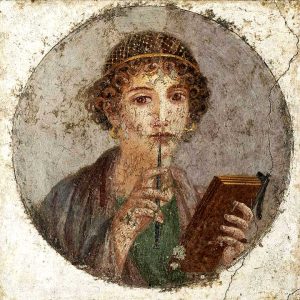
Major Artworks in Italy and Where to Find Them
The main works of art in Italy that every culture lover should see at least once in their life, with directions on where to find them: from Michelangelo to Caravaggio, from Leonardo da Vinci to Botticelli
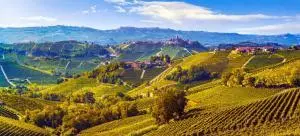
Popular Destinations in Italy – Discovering the Langhe
The region of Langhe inItaly, a UNESCO World Heritage Site, it is renowned for its patchwork of vineyards, forests, pastures, perched medieval villages, and castles. A microcosm of biodiversity, culture, and flavors where tradition and innovation blend in a unique way, symbolizing how nature and humans can collaborate harmoniously to create a distinctive environment.
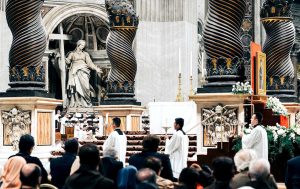
Jubilee 2025 in Rome – A Guide for Contemporary Pilgrims
The Jubilee 2025 will not only be a time of deep spirituality but also an opportunity to boost tourism and the economy of Italy’s capital
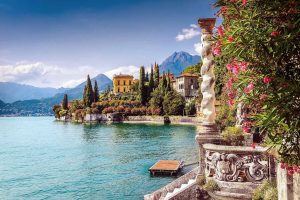
Popular destinations in Italy – Lake Como
Located in the heart of the Lombardy region in Italy, nestled between the Alps and the Po Valley, Lake Como has been described as the most beautiful lake in the world
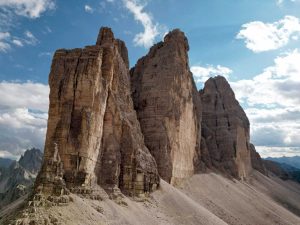
Dolomiti, the mountains in Italy carved by the gods
A unique natural treasure in the world, where breathtaking landscapes, rich biodiversity, and cultural heritage come together in an extraordinary combination. These are the Dolomites. Every visit to these mountains is an opportunity to connect with majestic nature and discover a culture deeply rooted in the region.
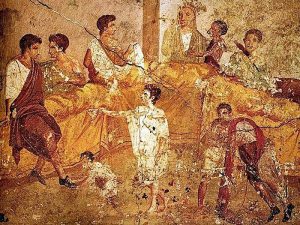
Trimalchio’s Banquet – Ancient Romans at the Table
Petronius, a writer who lived during the reign of Emperor Nero, left us with an unforgettable description of the banquet of the nouveau riche Trimalchio, a rude and exuberant guest. Even though the account is deliberately exaggerated, focusing on emphasizing the character’s vulgarity, it offers us one of the rare chances to get to know the Roman’s culinary taste.
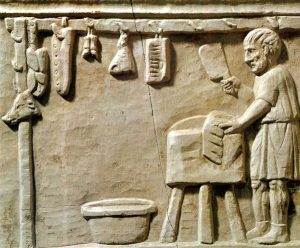
Ancient Romans at the table
Food and Culinary Habits in Ancient Rome. The daily life of ancient Rome is deeply reflected in the eating habits of its inhabitants, revealing a world of contrasts between sobriety and opulence.
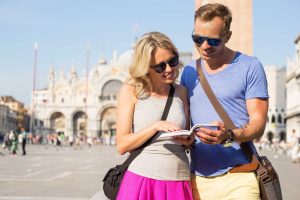
Venice, Essential Guide for Travelers
Explore the magic of Venice with our complete traveller’s guide. Discover the most iconic places such as Piazza San Marco and the Rialto Bridge.
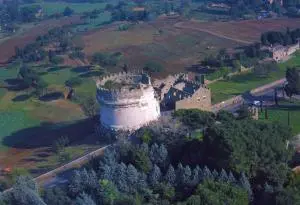
Ancient Appian Way, the highway of Ancient Rome
Known as the “Queen of Roads,” the ancient Appian Way in Rome is one of the most important engineering marvels of all time, a tangible testament to the greatness and mastery of Roman civilization.
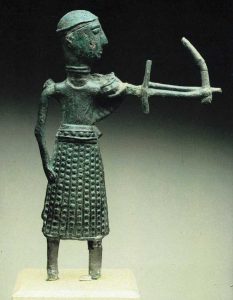
Museums to visit in Italy
The museums in Italy offer visitors a rich array of themes, types, and locations, making them a unique experience. Some of the world’s most historically and culturally significant museums welcome visitors to immerse themselves in the depths of Italian history and art.
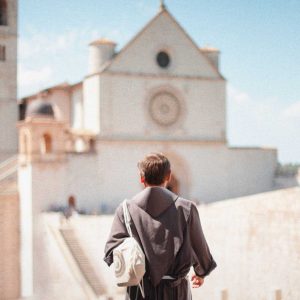
Umbria, land of history, art, nature, religion and flavours
Umbria is a reality suspended between the richness of its history, the depth of its culture, and the majesty of its nature. Located in the heart of Italy, between Tuscany, Marche, and Lazio, it is the only region on the peninsula without a coastline. Also known as the “green heart of Italy,” Umbria is a destination that provides a variety of experiences for visitors.

How I found a wife with Italian cuisine – Rome cooking class
Rome is a fantastic city to take a cooking class, with a rich culinary history and culture. With a little research, you can find the perfect cooking class for your needs

Luxury Vintage Shopping in Rome
The story of an experience lived in Rome, a four-hour shopping tour with an expert guide and a luxury car with driver to discover the best vintage luxury shops in the Capital
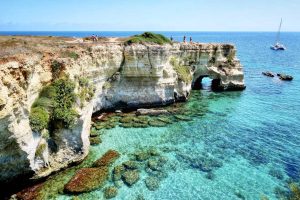
Trip to Puglia, a land to discover
Puglia is truly a land to discover, a hidden treasure in the heart of the Mediterranean. With its temperate climate and four distinct seasons, this region offers a unique tourist experience throughout the year
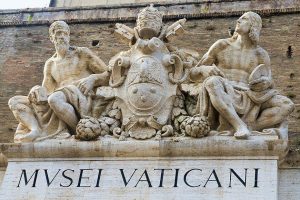
Entrance to the Vatican Museums and Sistine Chapel 2024 and 2025
The Vatican Museums and Sistine Chapel are about to introduce significant changes to their visiting schedule to optimize the use of their collections and provide a more inclusive experience for visitors, leading up to the Jubilee of 2025 in Rome. These changes will take effect on January 1st, 2024.
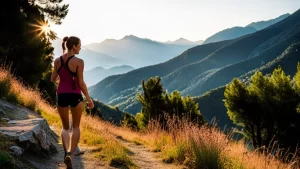
Italy: unconventional experiences for adventurous travellers
Italy is a country that offers a wide range of original and extreme experiences for the most adventurous travelers. Whether it’s exploring the depths of the sea, climbing imposing mountains, or immersing oneself in the rich culinary tradition of the country, there is something for everyone looking for authentic and unique thrills. Italy invites travelers to push their limits, discover new horizons, and live an experience that will remain imprinted in their memory.
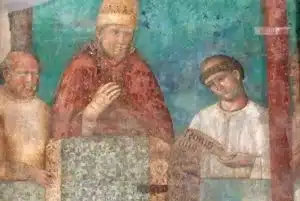
The pilgrimage in Italy
The tradition of pilgrimages in Italy is an integral part of the social, cultural, and religious fabric of the country. Throughout centuries of history, this practice has shaped individual and collective identities, enriching the spiritual and cultural life of those who undertake the journey. Pilgrimage remains a meaningful experience, reflecting mankind’s search for meaning and connection, and a link between the past, present, and future.
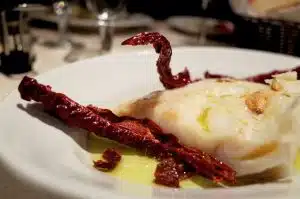
The 5 most loved Italian dishes in the world
Italy, the birthplace of gastronomy, is universally recognized for its rich and diverse cuisine that reflects centuries of culinary traditions passed down from generation to generation. While not everyone can afford to enjoy Italian dishes in a Michelin-starred restaurant, it is possible to experience the magic of Italian cuisine by preparing some of the most beloved dishes directly at home. Here are the five most loved Italian dishes in the world, along with their recipes and secrets for successfully replicating them in your own kitchen
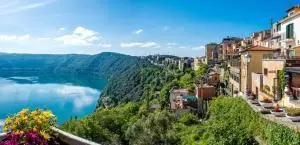
The Roman Castles, “invisible castles”
The Roman Castles, also known as the “invisible castles”, are historical places located near Rome, famous for their scenic beauty and gourmet food and wine tradition. Despite their rich history and natural attractions, these places often go unnoticed due to Rome’s extraordinary artistic wealth.
The very birth of Rome is linked to the events of Alba Longa, probably the current Castel Gandolfo, founded by Ascanio, son of Aeneas and Creusa in 1230 BC.
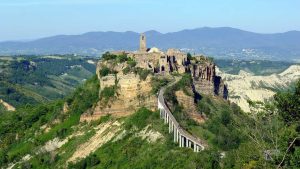
Civita di Bagnoregio, Caprarola, Bomarzo – DISCOVERING HIDDEN TREASURES OF ITALY
Italy is a country rich in hidden treasures and captivating destinations where history, art, and natural beauty come together in a unique and unforgettable experience. Among the lesser-known yet equally fascinating gems, Civita di Bagnoregio, Caprarola, and Bomarzo stand out. Let’s discover what makes these places so special.
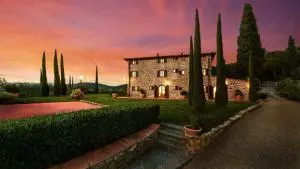
Wonders of Tuscany: a journey through Art, History and Food and Wine
Located in the heart of Italy, Tuscany is a true treasure to discover. Lush hills, luxurious vineyards, picturesque rural landscapes, historic villas, enchanting medieval cities and an atmosphere of refined timeless beauty have won the hearts of visitors from all over the world.
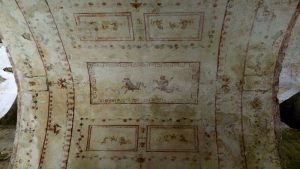
The Domus Aurea: a hidden masterpiece of Ancient Rome
Built by Emperor Nero in the 1st century AD, the Domus Aurea in Rome is an extraordinary monument that stands as a tangible symbol of the luxury and grandeur of ancient Roman civilization
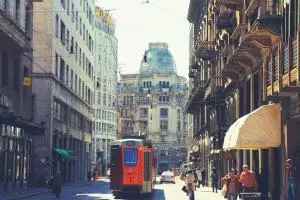
Guide of Milan for Newbies
Our Quick Guide to Milan for Beginners will accompany you in discovering the treasures of this fascinating and hectic metropolis, providing you with essential information on the main attractions.
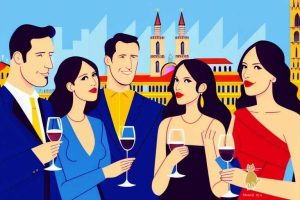
Milan: A food and wine experience not to be missed
Milan is much more than a fashion capital; it is also a top culinary destination. With its traditional cuisine, cosmopolitan culinary scene, food markets, and innovation, the city offers a complete eno-gastronomic experience.

Roman coast: a journey through history, sea and unique atmospheres
Discovering the Roman Coastline: A Journey through History, Sea, and Unique Atmospheres by Sarah Strol illustration by franco rea Roman Coastline We arrived in Rome
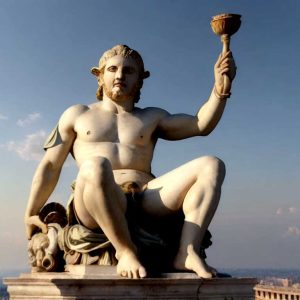
A Story of Rome
TRAVELS IN SPACETIME A Story of Rome It was a sweltering day in July, with the sun beating down on me like a burst of
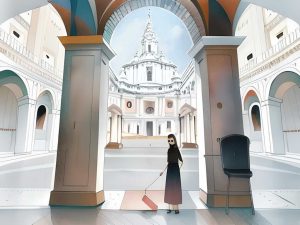
Discovering Rome’s “Hidden Treasures”
Discovering the “hidden treasures” of Rome Welcome to a fascinating journey through a less frequented Rome, different from the usual famous monuments but rich in
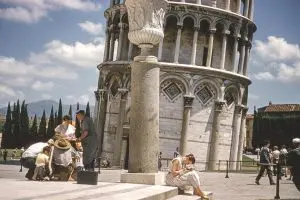
My Daily Excursions from Rome
“I am always looking for unforgettable experiences, and when I arrived in Rome, I was advised to participate in daily group or private excursions.”
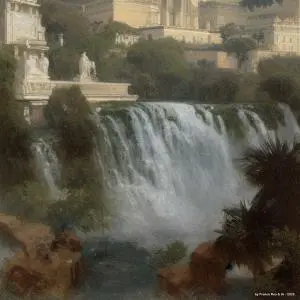
Impossible Rome
a gallery of images to you, created using artificial intelligence on the theme of “Impossible Rome”
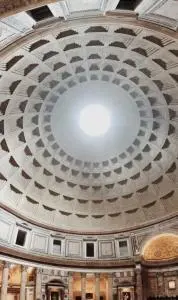
The Pantheon, great masterpiece of Roman architecture
Pantheon Contents The Pantheon Great masterpiece of Roman architecture. It is one of the ancient monuments best preserved in the world. We suggest a visit
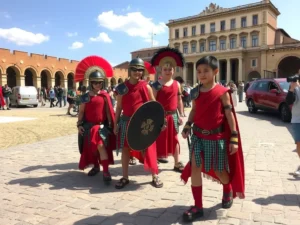
Fun Activities to do in Rome
for adults and children Fun and Unusual Activities to do in Rome Rome offers a myriad of opportunities to experience unique and enjoyable activities.
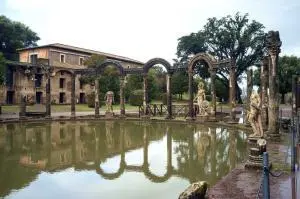
Villa Adriana in Tivoli, Rome
Villa Adriana – Tivoli, Rome The enormous complex of buildings of Villa Adriana in Tivoli, near Rome, was built (probably between the 118 and 134
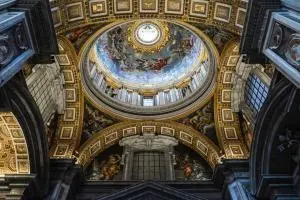
St Peter’s Basilica in Vatican State, Rome
The Basilica of St. Peter in the Vatican City The Basilica of St. Peter is in the heart of the Vatican City, an independent sovereign
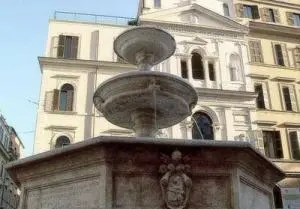
Rione Monti – the first quarter of Rome
Rione Monti Rome Index Monti, the first quarter of Rome The first quarter of Rome is “Monti” (mounts), so called as its confines once comprised the
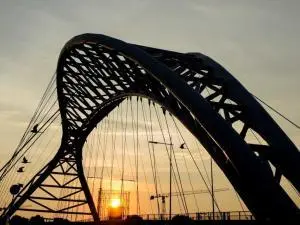
Places Contemporary Rome
The places of contemporary Rome Rome has never stopped adding new architectural layers to its topographic fabric, with works often created in peripheral areas, in
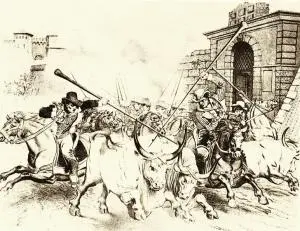
Eating in Rome
Eating in Rome! Eating like a God in Rome, Roman food’s survival guide! Index Eating in Rome “Please, recommend us a good restaurant!” it’s the
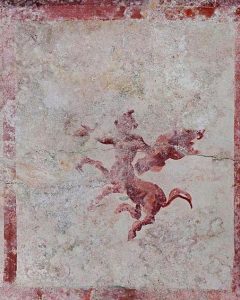
Why visit Rome
If you love traveling to discover unique places in the world, you must absolutely visit Rome!
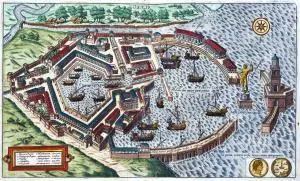
Portus Romae, the largest port of antiquity
Brief history of the greatest port in antiquity Portus Romae, the port of the Roman Empire Portus Romae was the main port of ancient Rome,
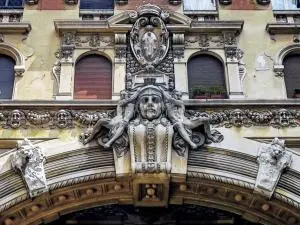
Unusual places to visit in Rome
Unusual places to visit in Rome … there are some places hidden outside the mass of tourist circuits… Rightly considered one of the most fascinating
